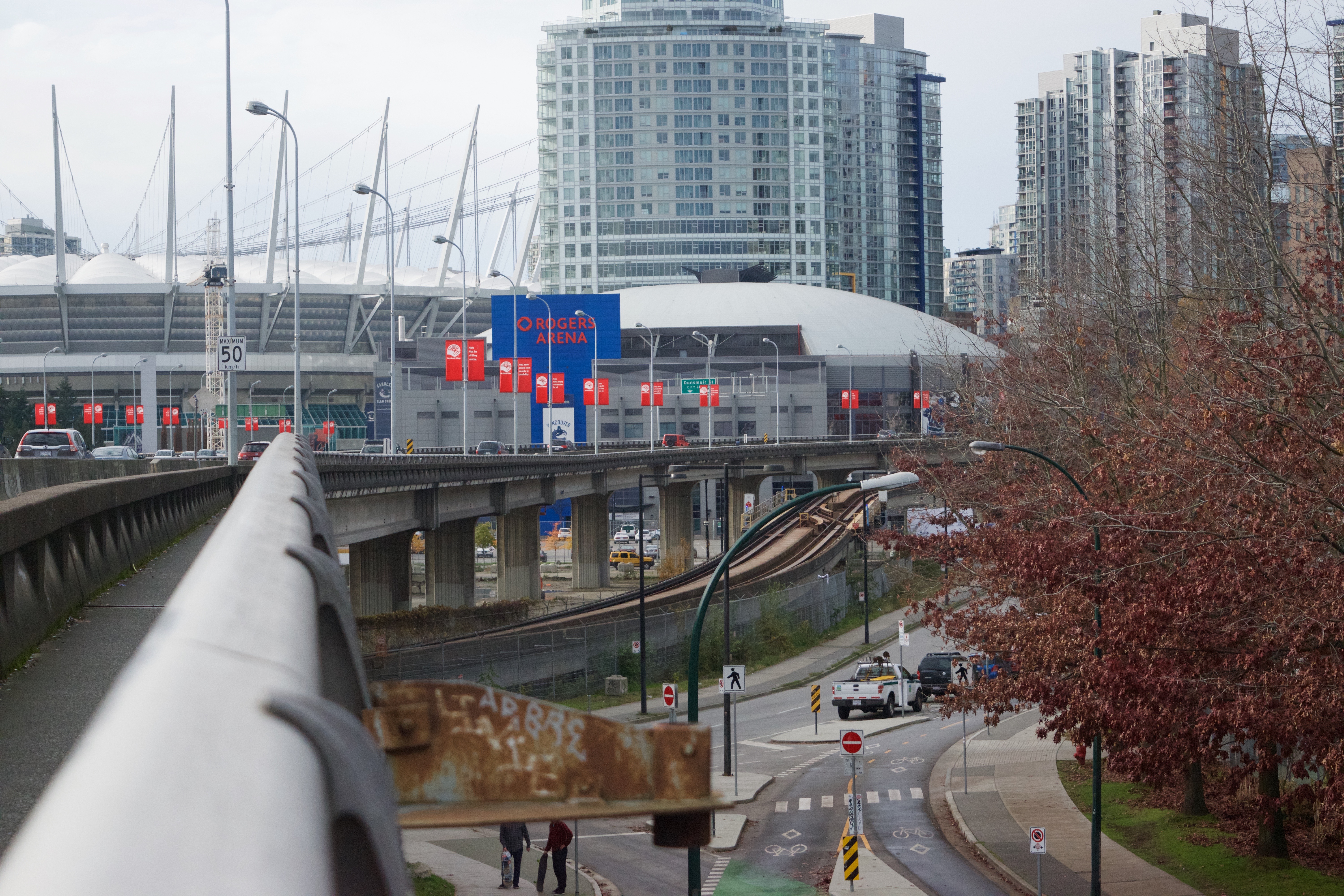rabble is expanding our Parliamentary Bureau and we need your help! Support us on Patreon today!
Vancouver’s viaducts are coming down to make way for condos and affordable housing, but activists from the city’s Black community are imploring city council to acknowledge displaced Black families in the planning.
The Georgia and Dunsmuir viaducts, traffic bridges meant to be part of a larger freeway system, sit atop what used to be Hogan’s Alley — Vancouver’s historic black community.
“You can’t point to Vancouver’s black community,” Wayde Compton, an author and activist, said to city council on Oct. 21, “But you can point to the viaducts and say ‘well, there it was.'”
The viaducts broke ground in the 1970s using federal urban renewal funds. Compton said the city identified the Hogan’s Alley neighbourhood as “blighted,” or in disrepair, and used that as justification to raze it and build a freeway.
He explained the freeway project was a combination of the car culture of the 1960s and slum renewal — the idea being that the city could clear a so-called slum by putting a freeway there and shift people out into projects.
But the reason Hogan’s Alley was in disrepair was because the city had stopped investing in infrastructure long before. It was zoned as industrial instead of residential, property owners were forbade from renovating their houses and the city neglected to maintain streets and sidewalks.
“It’s kind of ironic,” said Compton. “They called it ‘blighted’ and then purposefully enacted all these different bylaws making it impossible to improve the area. And then because it’s ‘blighted,’ justify completely levelling it.”
He noted there were never any plans to put freeways through white or rich neighbourhoods.
“There’s this tiny Black community that lives in this four block area and where do they choose to put the freeway? It just happens to be that four block area… very clearly the plan was to put it on top of this area whose residents are least able to fight back,” said Compton.
Stephanie Allen, a masters of urban planning student at Simon Fraser University, explained that it was the looming threat of removal — the city enacting their power of eminent domain — that made Hogan’s Alley residents leave.
She explained the federal urban renewal funds stopped after resisting communities pointed out the institutionalized racism in renewal projects. This is why the viaducts stand alone as vestiges of the planned freeway system.
“It’s this little stretch of elevated freeway that doesn’t really make any sense,” said Allen.
Forty years later, the viaducts are underused and sitting on valuable land in the False Creek area. City council decided on Oct. 27 to tear the raised freeways down and develop the area.
Daniel Tseghay, a Vancouver activist and writer, is worried development of expensive condos in the space the viaducts now occupy would again disperse a racialize community — this time neighbouring Chinatown.
“We’re seeing gentrification go on in the Downtown Eastside… which is very close to Chinatown,” Tseghay said. “People are getting priced out… there are Chinese seniors who can’t afford to live where they live right now.”
A plaque commemorating Hogan’s Alley was installed in 2013, but Allen, Compton and Tseghay want to see more. They’re calling on the city to change its practices when it comes to urban planning.
“The problem of Hogan’s Alley was that the people who lived there weren’t consulted in the planning of their neighbourhood,” Compton said.
Compton wants to see a Black cultural centre be built that could keep the history alive in a permanent way.
“Let’s look at what was lost,” said Allen. “You’re looking at businesses, jobs, families… a visible arts and culture presence… there was a Black church.”
Tseghay’s priority is real affordable housing and ending the gentrification process.
“They’ve re-defined affordable housing to the point that it’s not affordable for a lot of people in the area… so this claim that they’re correcting past mistakes is just not true,” said Tseghay. “They’re just going to be pricing out another group of racialized communities.”
The decision to take down the viaducts was a divisive one for the city — over 50 community speakers signed up to speak at the first council meeting addressing viaduct removal. Allen said she didn’t want to take a side because whether the viaducts stayed or went was secondary to her goal of restorative justice for Hogan’s Alley.
“If you decide to remove the viaducts you have an obligation to address past unjust actions taken by former council and staff by pursuing policies and action that will seek to bring restoration and regeneration to this place,” she told council.
Megan Devlin was rabble’s news intern for summer 2015. She’s pursuing her Masters of Journalism at the University of British Columbia.




